How does Water Content Affect Castables?
Articles
How do you know when you added too much or not enough to your castable? Unfortunately, there isn’t one answer that fits all. This is highly dependent on the product and the required amount of water. Each castable must be approached differently.
Over and under-watering is a very common practice within the refractory industry. In our Resco Product demonstration videos we take over and under-watering castables to the extreme. Allowing us to clearly address the issues. Adding or reducing the amount of water for the castable can be beneficial but should only be done by an expert with extensive experience with the product in use, as not all products are the same.
Increasing the amount of water can allow products the ability to pump up to 200 feet. However, the addition or subtraction of water can be detriment to the refractory’s properties. It isn’t uncommon for overwatering because it makes the castable easier to install. Make sure you understand the type of refractory castable necessary for your application as water content varies.
What are the most common ways to measure water for castable refractories?
1. Water Meter measures the amount of water based upon the water pressure. This should be calibrated in that the weight of the water coming out is the same as what the water meter reads but it can easily be off.
a. Pros: This is the easiest method to measure large volumes of water
b. Cons: Measurements will vary if it isn’t calibrated every time or if the water pressure is inconsistent.
2. Volumetric is more accurate than the water meter but can easily be off. Since the process relies on the human eye to confirm the amount, variations are likely.
a. Pros: doesn’t require specific equipment, cheap to do, reduced volume reduces inherent errors
b. Cons: relies on humans to make sure it is accurate
3. Weight is the most accurate method however the scale needs to be calibrated and tared.
a. Pros: Most accurate
b. Cons: Takes longer and Not ideal for larger volumes
What is the best method for finding the right water level for your castable?
The best preventative measure is to do a mockup of the installation. This means using the same crew and equipment and mix up some material. If the material doesn’t have the proper consistency, it should show here. Installers might skip this step as it takes up time and resources. An installer that is familiar with the product can evaluate during the first batch of casting. A lot of times the telltale signs are just from experience with the product.
Overwatering castables isn’t always as obvious as you would hope. The material will be very fluid. Generally, the material will start to look like a product that requires a different installation (vibe cast to just being cast, cast to pump cast, pump cast to self-flow). On the other hand, some products can look dry until you apply vibration to them and they easily move. If person knows what the material should look like, they will know if the material has a different consistency. Underwatered castables can look dry and be very hard to cast and sometimes will not move or come together. Smoothing the castable with a wet trowel will make the piece look nicer but adds a minuscular amount of water, isolated on the top. Increasing the amount of time required for the castable to set up.
What are the signs of overwatered and underwatered castables?
The easiest way to see this would be after they have cured, and the forms have been stripped. At this point in time it is the easiest to identify if there was a problem, however there is no corrective action. Periodically you can potentially correct problems while casting if seen.
Overwatered Castable: there should be a sludge layer on top that is just fines and is brittle and could be cracked. If they vibration cast an overwatered piece, cutting it in half should show most of the aggregate segregated.
Underwatered Castable: there will be a lot of voids.
What happens to the castable properties when overwatered or underwatered?
Underwatered and it will be hard to cast. If you have a lot of void, density and thermal conductivity will be down, while other properties may stay the same. If you still cast a uniform sample (no voids) with less water, you should see higher densities, thermal conductivity but cold crushing strength and erosion loss could go either way.
Overwatered and you should see decreases in density, cold crushing strength, and erosion loss.
All castables should be treated differently as each requires different amounts of water levels. What works for one won’t necessarily work for other products. For more information about a particular product please contact our technical staff.

